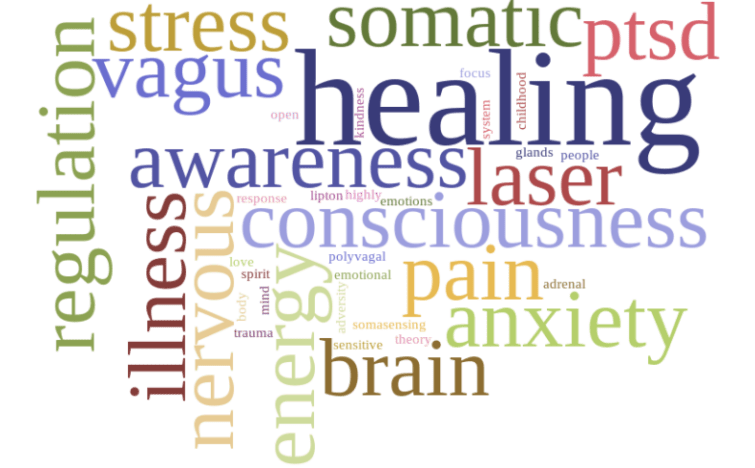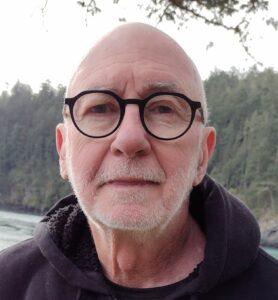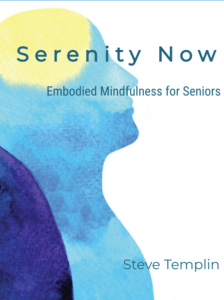What if there was an entirely new scientific perspective on what really causes chronic pain, anxiety, depression, and a host of other common conditions … that was a radical departure from conventional medical thinking?
Well, there is new science that focuses on a novel understanding of the cause and resolution of physical and emotional suffering. This contemporary neuroscience is called the Polyvagal Theory.
When high tech Western medicine fails to provide effective solutions to suffering we’re often motivated or compelled to investigate other options for relief. This pursuit can lead to an ever-expanding search for the right treatment, especially when that search is enabled by the internet. The lack of successful solutions that many people experience is often explained by the polyvagal theory as well.
What is the Polyvagal Theory?
The Polyvagal Theory reveals the primary cause of most chronic pain, anxiety, and illness while also showing how we can more efficiently heal ourselves. This point of view is radically at odds with conventional medical thinking.
We’re shown how a balanced brain and autonomic nervous system (ANS) are designed to keep us physically and emotionally resilient. On the other hand when the ANS is imbalanced normal repair and maintenance functions of the body are inhibited, or turned off.
This breakdown of norman repair and self-healing results in the symptoms of illness that we know by an ever growing list of named diseases. From the polyvagal perspective most of these ‘diseases’ are a reflection of ANS imbalance and respond favorably to a mindbody approach aimed at balancing the ANS and activating the vagus nerve.
The vagus nerve is the cranial nerve that holds the key to the healing potential of the ANS. Its activation is the key focus of the Polyvagal program. When the vagus nerve is activated gene expression changes to support the biochemistry of healing and repair.
As if turns out, the key to balancing the autonomic nervous system and vagus nerve, for optimal physical health and emotional well-being, has to do with balancing or regulating emotional energy. Yep, it turns out that knowing how to live with the experience of ‘feelings’ in your body is the key to resilient health. This skill is ultimately an inside job that can be learned with practice.,
The good news is that Polyvagal Theory puts the power to heal into our own hands. It also explains why so many other approaches have failed to provide lasting relief. Working from the outside with treatments or dietary interventions alone ignores the need for balancing the ANS and activating the vagus nerve. That approach is akin to tinkering with the appliances in your home before you make sure that the circuit breakers are all in place.
The bad news is that none of us were taught to value or how to live with and process emotional experience. This lack of emotional awareness puts us at a distinct disadvantage when it comes to maintaining our health and wholeness. A lack of emotional awareness and its impact on the ANS results in the symptoms of illness for which there is no effective medical intervention alone.
A Deeper Dive Into the Polyvagal Theory
This section explores how this theory gives us the knowledge to understand ourselves more fully and most importantly how to amend our nervous system for a more happy and healthy life. This is a tad technical but please hang in because this new science is life changing
The ‘poly’ in Polyvagal refers to the ‘many’ aspects of the vagus nerve. There are essentially two branches of the vagus nerve. When the autonomic nervous system is ideally balanced the ‘ventral’ vagus is activated. This aspect is called the social engagement system. It goes to the heart and face and allows us to become genuinely engaged with others …. and with our own internal experience. This connected form of engagement signals safety and can move us out of a fight or flight response to threat. In the ventral vagal state you have the potential to heal anything.
The ‘dorsal’ branch of the vagus nerve is the part that’s activated when fighting or running away isn’t an option. It’s activated when we’re trapped or overpowered. We share this survival mechanism with all warm blooded animals. This response immobilizes us … as in playing possum. But it isn’t playing. It’s an automatic, unconscious response of the nervous system to overwhelming threat.
We can become conditioned to live our lives in these unconscious reactions to threat. Early experiences can become our go to neurological state decades after the initial threat is gone. The fight or flight response can become an easily triggered experience of agitation, frustration, anger, or anxiety. The dorsal vagal response of immobilization is often experienced as physical or emotional collapse, overwhelm, hopelessness, depression, or dissociation.
Here is where Polyvagal Theory comes to the rescue. It helps us to understand that these responses to life are not personal failings, but are rather unconscious, automatic strategies for survival that have been programmed into the nervous system. And with knowledge and awareness we can learn to identify these states for what they are and create more appropriate neurological habits in support of greater health and emotional well-being.
Self-Regulation training provides the knowledge and awareness that we need to make these neurological changes.
Emotional energy can be balanced to support a healthy mind, body, and spirit. Most of us are familiar with the two most common emotional patterns.
The most common is to suppress emotion. We learn to ignore, dismiss, or minimize emotional experience. The other is the painful pattern of getting stuck in emotion or overwhelmed. Fortunately, there is a middle ground of learning how to let emotional energy flow so that it carries us forward in life with greater resiliency on all levels. Learning how to regulate emotional energy activates the ventral aspect of the vagus nerve for mindbody healing.
Self-Regulation Training …. Just What is It?
We can learn how to get out of our heads and reconnect with the healing wisdom of our bodies. However, in a culture that prizes ‘thinking’ over ‘feeling’, this is no easy task. One of the reasons for this preference of ‘thinking’ over ‘feeling’ is that living in our heads is safe when compared to the pain …. especially the early heartfelt emotional pain that we’ve experienced in our bodies as children.
Self-Regulation training makes coming home to our bodies possible in spite of the cultural bias against feelings. It encompasses a number of user-friendly processes that help us to safely reconnect with the healing power of our bodily experience. Self-Regulation training is a collection of awareness and energy balancing skills that are needed to support healing via the autonomic nervous system and vagus nerve.
I’ll briefly describe the self-regulating components of the Polyvagal Pain Relief program. All of the components that I’ll review will have a balancing influence on the ANS, vagus nerve, and on overall health and well-being.
This core set of practices are what I’ve found to be most effective over my 35 years in practice. Some of the following processes can be learned rather quickly while others will require a fine tuning of awareness that will develop over time. Regardless, practice will pay dividends of greater health and well-being …. and greater trust and confidence in your body’s innate capacity to heal.
Heart Focused Breathing
Heart Focused Breathing is the foundational practice for relieving pain & anxiety. It’s relatively easy to learn & produces rapid neurological benefits. The emerging field of neurocardiology informs us that your heart is more than a pump. Your heart has a brain of its own and is instrumental in improving cognitive performance, intuition, and emotional balance. Much of this information comes from the Institute of HeartMath.
Energy Awareness
Energy Awareness represents a refinement in how we use our attention. It allows us to become aware of ourselves & our environment in a way that readily balances brainwaves for better neurological balance. Learning to experience energy connects us not only to ourselves but to others & the environment as well. Energy Awareness synchronizes alpha waves across the brain, enhances ANS balance, and supports the resolution of pain & anxiety.
Somatic Focusing
Somatic Focusing is a subtle, yet powerful refinement of how we use our awareness. We learn that bodily feelings and sensations are gateways to insight and self-healing. Researched initially at the University of Chicago in the 1960s this process offers us fine-tuned guidance for turning unpleasant sensations and troubling feelings into solutions for pain, anxiety, creative challenges, and chronic illness.
Acupoint Touch
Acupoint Touch allows you to benefit from the healing influence of acupuncture points by using gentle touch. This works well for both adults & children. The gentle touch of acupoints has a two-fold benefit. First, touch triggers the energy balancing influence of acupuncture points. Secondly, gentle touch triggers a cascade of neurochemistry that supports the resolution of pain & anxiety.
Expressive Writing
Expressive Writing is a well researched and highly effective method for balancing the emotional energies that disrupt our physical health and emotional well-being. Most individuals learn to enjoy writing as an effective and economical way to discharge troubling emotions in the pursuit of more ease and calm. The resolution of pain and anxiety are common benefits to this foundational practice.
Concluding Thoughts
Polyvagal Theory represents an emerging medical model that is significantly less dependent on medicine and more dependent on human consciousness. It’s validating our innate capacity for self-healing while also helping us to understand the benefits of many ancient practices. It’s safe, non-invasive, and either a complement to medical treatment or a stand-alone therapeutic intervention.
Thanks for reading … and hopefully this information will be helpful to you or for someone you care about.
Steve Templin, D.O.M.


 Steve is a retired Doctor of Oriental Medicine, Acupuncture Physician, and HeartMath Trauma-Sensitive Certified Practitioner with over 35 years of clinical experience in the fields of Energy Medicine, Energy Psychology, and Biofeedback.
Steve is a retired Doctor of Oriental Medicine, Acupuncture Physician, and HeartMath Trauma-Sensitive Certified Practitioner with over 35 years of clinical experience in the fields of Energy Medicine, Energy Psychology, and Biofeedback. 